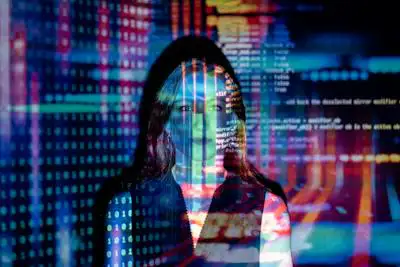Fortress at the Core: Bank-Level Defenses
Banks, the custodians of our financial trust, operate at a fortress-like level of security. They employ a multi-pronged approach that tackles threats from multiple angles:
Data Encryption: Imagine your sensitive data, like account numbers and passwords, wrapped in a thick, unbreakable code. That's encryption. Banks deploy 128-bit or 256-bit encryption algorithms, rendering your information virtually unreadable to unauthorized parties.
Access Control: Just like entering a restricted area requires proper authorization, accessing your online banking portal follows strict protocols. Multi-factor authentication (MFA) adds an extra layer of security, requiring not just your password but also a unique code or fingerprint scan for verification.
Fraud Monitoring: Banks employ sophisticated systems that analyze your account activity in real-time, flagging suspicious transactions like large withdrawals from unusual locations or repeated attempts at failed logins. Think of it as a silent guardian watching over your financial movements.
Network Security: The very pipes that carry your banking data are fortified with firewalls and intrusion detection systems, acting as digital bouncers who repel cyberattacks before they even reach your account.
Physical Security: Banks implement stringent measures to protect their physical infrastructure, from secured data centers to restricted access to internal systems. Even the humble paper check undergoes rigorous printing and processing protocols to prevent counterfeiting.
Your Watchtower: Personal Vigilance Matters
While banks stand as your financial Fort Knox, your own vigilance is an indispensable line of defense. Here are some essential steps you can take to bolster your checking account security:
Password Powerhouse: Create strong, unique passwords for your online banking portal and avoid using the same password for multiple accounts. Remember, complexity is your friend: mix uppercase and lowercase letters, numbers, and special characters.
MFA Matters: Embrace multi-factor authentication wherever it's offered. It might seem like an extra hurdle, but it's a powerful barrier against unauthorized access.
Beware the Phish: Steer clear of suspicious emails, texts, or phone calls claiming to be from your bank. Banks will never ask for sensitive information like passwords or PINs through these channels. If you're unsure, contact your bank directly through verified channels.
Secure Access Zones: Avoid logging into your online banking portal on public Wi-Fi networks. Stick to trusted, password-protected connections at home or work.
Statement Scrutiny: Regularly review your bank statements and report any discrepancies promptly. Early detection is key to minimizing damage from potential fraudulent activity.
App Armor: Keep your banking apps updated with the latest security patches. Developers fix vulnerabilities through updates, so staying current is crucial.
Lock it Down: When done with online banking, log out properly and close the browser window. Don't let your financial fortress stand open after your visit.
Beyond the Basics: Emerging Technologies and Future Trends
The world of financial security is constantly evolving, with new technologies and protocols emerging to combat ever-evolving threats. Here are some glimpses into the future:
Biometric Authentication: Fingerprint scans, iris recognition, and even voice verification might become commonplace, offering heightened security with the unique identifier of your own body.
Behavioral Monitoring: Systems that analyze your typical banking patterns and flag anomalous activity could become even more sophisticated, catching fraudulent transactions before they even clear.
Blockchain Integration: The distributed ledger technology behind cryptocurrencies could find its way into traditional banking, providing an additional layer of transparency and security for transactions.
Conclusion: A Shared Responsibility
Checking account security is a shared responsibility. Banks stand as your financial guardians, employing robust systems and protocols to safeguard your money. However, your own vigilance and awareness remain critical in this partnership. By understanding the existing security measures, practicing healthy online habits, and embracing future innovations, you can ensure your checking account remains a safe haven for your hard-earned cash. Remember, knowledge is power, and in the realm of financial security, empowered individuals build impregnable fortresses for their finances. So, stay informed, stay vigilant, and enjoy the peace of mind that comes with knowing your checking account is secure.

